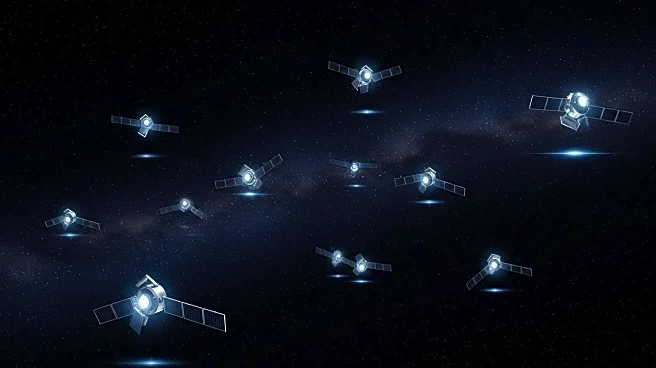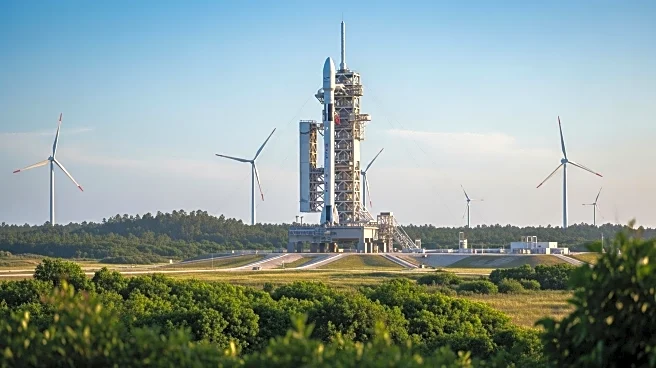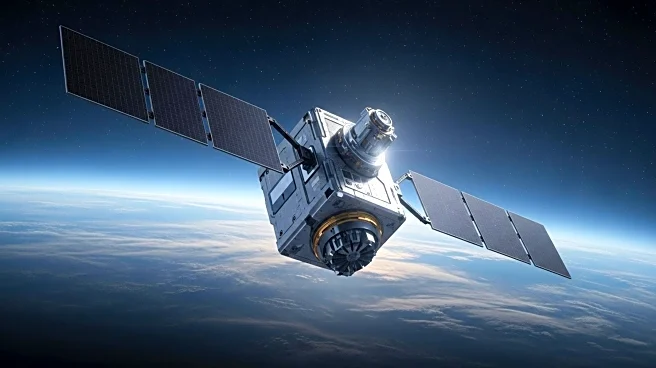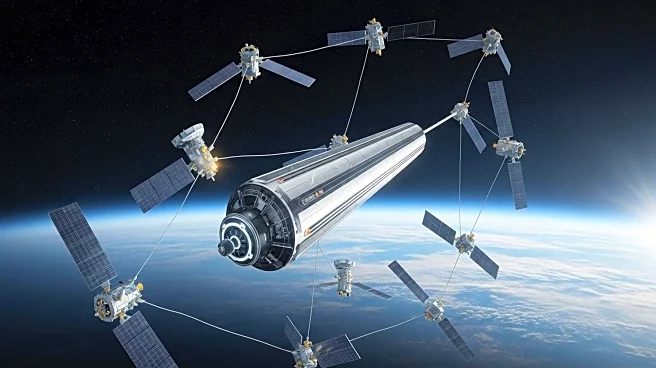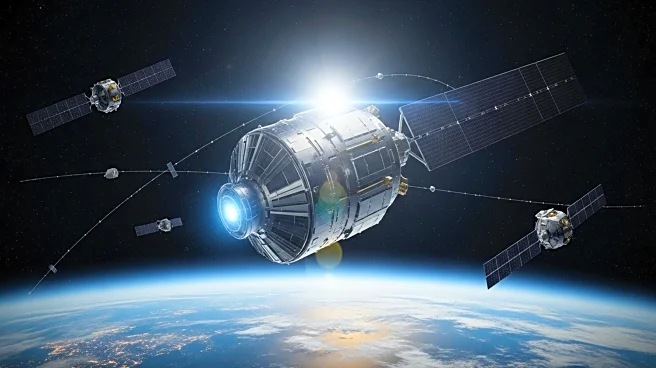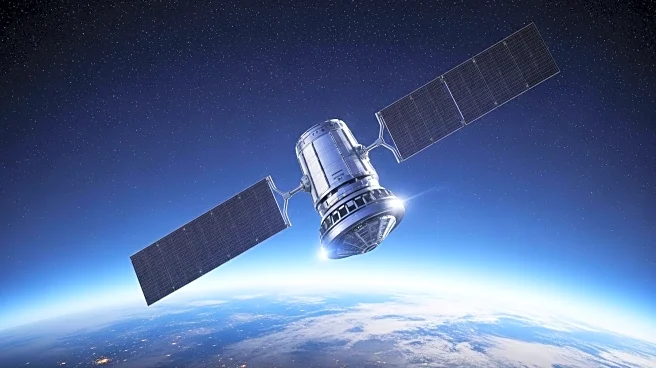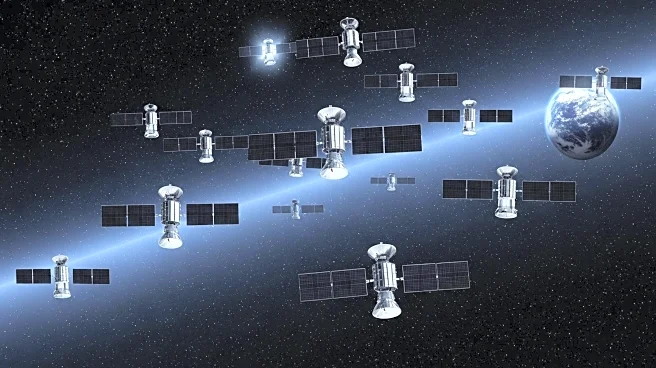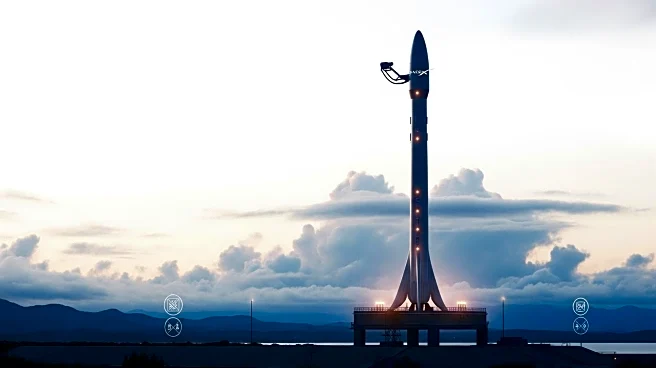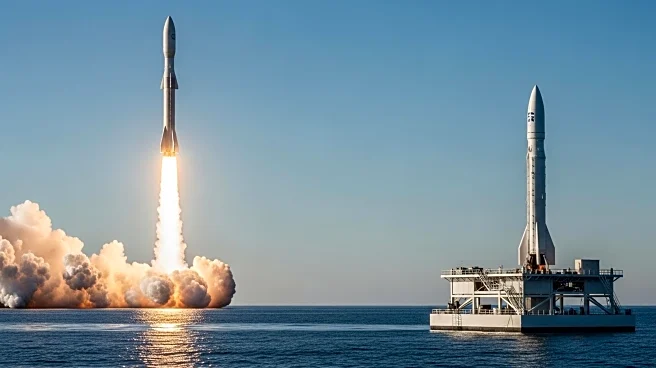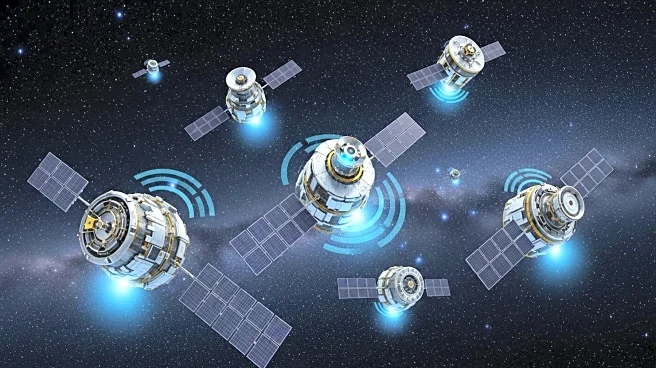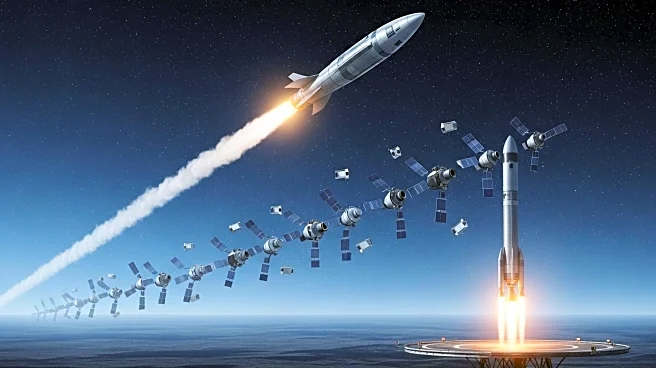What is the story about?
What's Happening?
On September 28, 2025, SpaceX launched 28 Starlink satellites from Vandenberg Space Force Base in California. The launch, which took place at 10:04 p.m. EDT, marked the 28th flight for the Falcon 9 rocket's first stage booster, B1063. This event was notable for the 'twilight effect' it created, visible across the American Southwest, including Arizona. The launch added to SpaceX's growing Starlink megaconstellation, which now exceeds 8,500 active satellites, aimed at providing global internet coverage. This was SpaceX's 124th Falcon 9 launch of the year, highlighting the company's commitment to expanding its satellite network.
Why It's Important?
The expansion of the Starlink network is significant as it aims to provide high-speed, low-latency broadband internet to underserved and remote regions worldwide. This development is crucial for bridging the digital divide, offering connectivity to areas that lack reliable internet access. The successful launch and recovery of the Falcon 9 booster also underscore SpaceX's focus on reusability and cost-effective space missions, setting a new standard in the commercial space industry. The visual spectacle of the launch, witnessed by many, also serves to engage the public in space exploration and technological advancements.
What's Next?
SpaceX is expected to continue its aggressive launch schedule, further expanding the Starlink constellation. As more satellites are deployed, the network's coverage and capacity will increase, potentially enhancing internet access in remote and underserved areas. The company's focus on reusability and rapid turnaround of its rockets may lead to more frequent and cost-effective launches, further solidifying its position in the commercial space sector. Stakeholders, including governments and businesses, may look to leverage this expanded connectivity for various applications, from education to emergency response.
AI Generated Content
Do you find this article useful?
